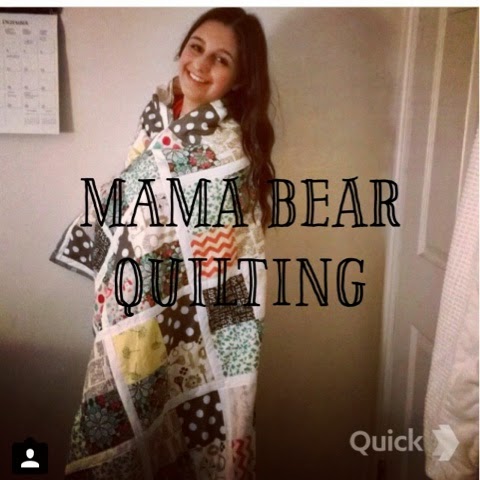Q: I adore your business name, The Sewing Nerd Slipcovers! How did you come up with it?
A: My husband, Steve gave it to me! When I started out I was sewing in my unfinished freezing basement for hours and he said I was such a sewing nerd. It stuck!
Q: How did you get your start in sewing?
A: I started sewing about 6 years ago by making car seat covers and baby dresses. I bought my first sewing machine from Target, and I had to ask my husband how to thread the bobbin. My first slipcover was my very own sectional. I was sick of looking at the stains that always happen with little kids around. I loved the sectional, so I got a quote to have it slipcovered and I was shocked how much it was. So I decided to do it myself. It took me 6 weeks to finish and I used ton of needles because I was doing it on a home machine. I thought making piping was the most miserable thing! But I finished it and thought "I could do that again and maybe make some money!"
Q:How did you turn your love for sewing into a business?
A: I bought a used green wingback chair off of a local website for $25 and I used the extra material I had left over from my sectional to slipcover it. I listed it on that same website and made $150. I was hooked. I started to buy used furniture that I could see had great frames and slipcovering them. My favorite part was figuring out the best way to take something old and used and make it look expensive and fresh.
Q:Tell me what type of machines you are using.
A: I started out with my Target machine, and then upgraded to a Bernina. It is a great machine, but not made to work with the material used in slipcovers. About two years into this adventure I finally took the leap of faith and bought a used Juki sewing machine and serger. They are both older than I am, but they are amazing life changing pieces of equipment. I can do things like piping, that I used to hate, quickly and efficiently. I was intimidated at first, but they are awesome.
Q:You have two kids that were very young when you started this business; how have you balanced family life and work?
A: This has been such a great opportunity for me to show my kids that you can work with your hands and make money. I love being able to contribute to our family and still have flexible hours. Before I had my studio I worked from home, and the kids had toys to play with. At the studio I have toys and coloring books, but their favorite thing to do is play with my fabric scraps. I also give them small jobs around the studio and they feel like they are helping out. My kids know that my job is helping the family, and they want to help too.
Q: What is your advice for sewers that are trying to make a business out of this?
A: Don't give up when it gets hard. Your feel like you aren't getting anywhere, but keep going. And most of all don't compare yourself to other people.
Q: What is your client base like?
A: My clients are the best! All of my advertising right now is word of mouth, and they are keeping me busy. Right now most of my work is slipcovering pieces my clients already have. I make my clients pick out their own fabric, because I want them to love it.
Q:What is the strangest thing about the business?
A: Clients will drop off their furniture to me and I will start pulling cushions off. I find some weird stuff! I have found Legos, dog bones, a looking glass, and a really questionable white powder!!
Q:What is your dream for this business?
A: I can't wait to be able to make read made furniture that is high quality at a great price. I have the best clients out there, and I want to make sure to offer them the best product.
***Katie was so much fun to interview and she has so many great tips for sewing and business. To check out some more of the interview head over to my Facebook page mamabearquilting. To get in contact with Katie you can email her at thesewingnerd@gmail.com and check out her blog here. If you have any questions for Katie please comment below!!
























